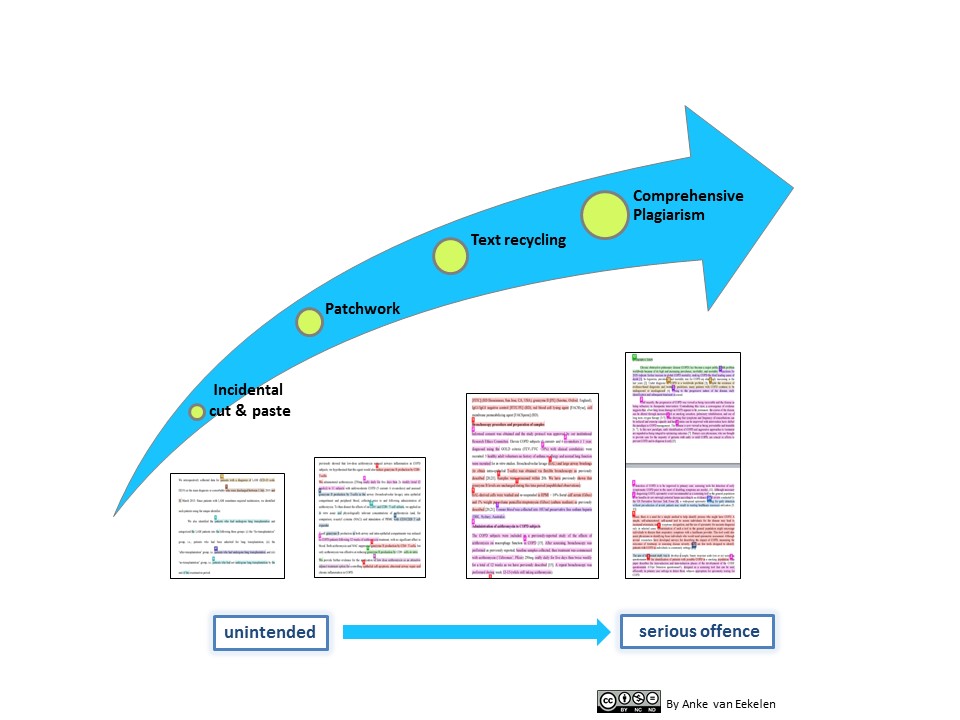Plagiarism and Copyright
At the core of academic research lies the investigation of an original idea. Yet in reality, it is unlikely that all aspects of the research project to test this unique idea are completely novel too. Others may have developed similar concepts, applied overlapping study approaches or published work which matches your research communication strategy of this project.
It is important not to slip into the most likely unintended but nevertheless unethical practice, referred to as plagiarism. Lacking awareness of what plagiarism in academic research constitutes can lead to breaching Notre Dame’s Code of Conduct on research integrity as well as the publication ethics code of international academic journals.
What is plagiarism?
Notre Dame defines plagiarism as taking or using ideas, concepts, literary works or data from others and passing them on as one’s own without acknowledgement.
Plagiarism includes claiming undeserved credit, (close to) word for word copying expressions of others without rephrasing, inaccurately or not citing sources and claiming authorship beyond one’s contribution. It is the responsibility of staff and students to give credit where credit is due in all stages of a research project but particularly in research publishing.
How to prevent plagiarism?
- Referencing & attribution
- Quotes
- Paraphrasing & summarising key points in your own words
It helps to know that:
Copyright protects against plagiarism. Re-use of already published material in writing or featured as an image or diagram without permission breaches research integrity and publication ethics codes. Depending on the publication model, most often the publisher is the copyright owner of new research publications, unless research is published in Open Access and the researcher/author chooses a CC license to control the re-use of the publication (for more information see ‘Open Access ’)
Self-plagiarism refers to the re-use of published material originally written by the same author. This type of re-use is only allowed in case the author is the copyright owner of the previous publication. If the publisher holds the copyright, permission for re-use is required. Non-compliance results in text or image recycling and is considered duplicate publication of research findings, which compromises research integrity of authors, journal and publishers.
Plagiarism detection software can be used to check a completed manuscript for publication. Notre Dame provides access to Turnitin. It allows you to identify if, where and how much your writing shows overlap with available sources online. A report will give you a similarity score and a list of references identified as being sources of re-used text already available online.
Nowadays, reputable academic journals will use similar types of software to screen each new manuscript at submission. If not satisfied with the similarity score, your manuscript may need to be revised or may not be further considered for review at the journal. However, rarely will a journal base their decision on the similarity score alone. To judge the degree of unacceptability of existing overlap, journal editors will also consider the pattern and type of overlap, the level of attribution and the type of sources drawn from.
Types of Plagiarism
Plagiarism can vary from being accidental and unintended to being a deliberate unethical act. Its degree of unacceptability rises with the incremental amount and density of colour in a similarity report, as illustrated in the figure below.
While any deliberate plagiarism should be dismissed, some situations can explain the inadvertent re-use of written material. For example, it is generally accepted that there can only so many ways to describe a detailed aspect of a research study clearly, accurately and succinctly. Some researchers may be non-native English speakers and lack language proficiency required to rephrase. Disagreement may exist on what can be considered common scientific knowledge.
Insight into Notre Dame’s ethical norms of appropriate academic conduct, its consideration of breach of its code, including plagiarism, and how academic misconduct is dealt with at the University is provided as part of the Staff and Student Code of Conduct and Student Academic Integrity Policies, and the Academic Misconduct (Plagiarism) Policy.


Connect with Notre Dame on Social Media
Australia
Fremantle
Broome
Sydney